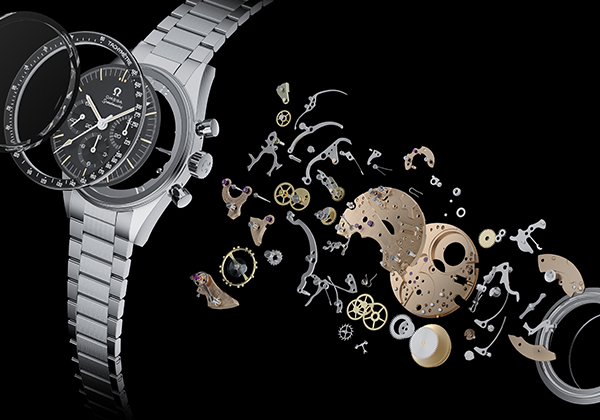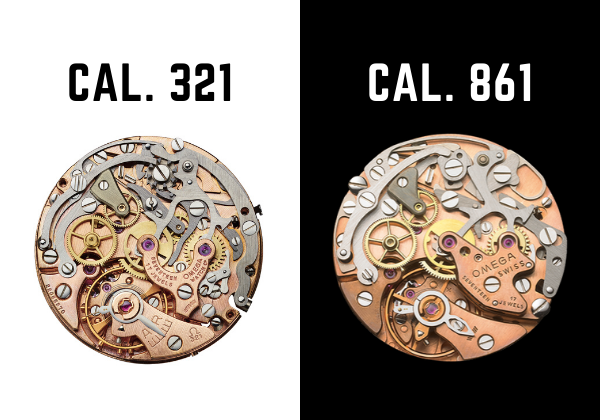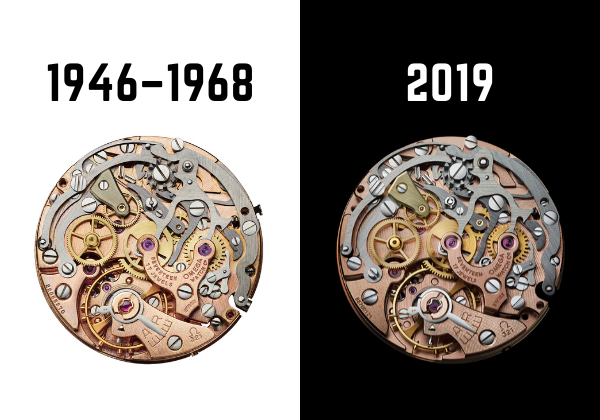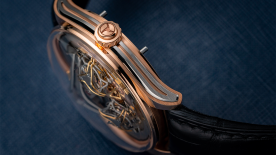* This is the follow-up to our previous article about the Speedmaster Moonwatch 321 Stainless Steel “Ed White” which you can read here.
The ancients believed that history was written in the stars, that we could discover our fates by deciphering celestial movements, learning their syntax, grammar and vocabulary. Astrological systems have existed since pre-Christian times, and although theories exist as to how humanity came to associate heavenly confluences with earthly ones, the fact is we don’t know for sure. Perhaps we just needed to come up with something to justify staring at the stars.

There is a common saying about human ambition; that you should aim for the moon so that even if you miss, you might still be able to hit a star. Whoever said this clearly had no understanding of basic astronomical concepts. Fortunately, the intrepid crew of Apollo 11 possessed only the high-reaching spirit of this saying, and not its dim grasp of science, when they went to the moon. Recreating the cal. 321, the hand-wound chronograph movement that inhabited the Speedmaster timepieces of astronauts such as Neil Armstrong and Buzz Aldrin, was Omega’s own version of the lunar mission.
The movement that we know as the Omega cal. 321 was first produced in 1946 as an evolution of the Lemania CH 27 chronograph movement (which had existed since 1942). It included technical improvements on the original movement, improvements such as anti-magnetic components, an Incabloc shock protection system for the balance, and a spring which allowed watchmakers to better adjust the parts relating to the chronograph minute counter.
It was this movement, distinct from all the other variations of the Lemania CH 27 chronograph movements, that went to the moon, and has thus acquired a near-mythical status in the minds of specialist watch collectors and aficionados. At the time when the cal. 321 was produced, Omega and Lemania were part of the same group of watch companies, the Société Suisse pour l’Industrie Horlogère (SSIH), which also included Tissot. Lemania movements powered Omega watches as a matter of course.
In 1968, production of the cal. 321 ceased, and it was replaced by the cal. 861. Two key differences between these two movements: the cal. 861 utilised a coulisse-lever (generally perceived as more robust and cost-effective) compared to the cal. 321’s column wheel (conventionally seen as being more prestigious), and the cal. 861’s construction was — according to critics — not as aesthetically elegant as the cal. 321. The moon-bound Speedmasters housed the cal. 321, despite the lunar missions taking place after this shift in production — in terms of market distribution, it would take some time for cal. 321 Speedmasters to be fully replaced by cal. 861 Speedmasters.

When Omega decided to recreate the cal. 321, two years before the 50th anniversary of the moon landing in 2019, several challenges presented themselves. Although a version of the Lemania CH 27 chronograph still remained in production, being used by a handful of other high-end watch companies, it was not the specific historical iteration of the chronograph that powered the lunar watches. And because the movement in question was such a significant piece of cultural history, it just wasn’t possible to substitute its closest modern equivalent and call it a day. No, Omega had to find some way to bring back the exact version of the Lemania CH 27 that they wanted — the variant known as the cal. 321.
One big piece of the puzzle was deep-scanning the actual Speedmaster worn by Eugene Cernan, last man to walk on the moon. At a cost of around 1mil CHF, a fully three-dimensional, high-resolution digital scan of the movement inside this watch was obtained. Another important piece of the puzzle was the original set of technical schematics from Lemania. In an oddly appropriate illustration of how history turns in circles (especially in industries as geographically concentrated as watchmaking), Lemania left the SSIH group in 1981, renamed itself Nouvelle Lemania and was acquired by Breguet in 1992. In 1999, just before the turn of the millennium, Omega’s parent company, the Swatch Group acquired Breguet and the two ex-SSIH companies were once again reunited within the same corporate group.
Over the years, Omega watches containing the cal. 321 had been turning up at the Omega manufacture for maintenance and servicing, allowing Omega’s technicians and watchmakers to keep up their familiarity with the movement. Their movement and component archives still retained stocks of spare parts for the cal. 321.

The time was right for the cal. 321 to come home to Omega, not in the form of refurbished movements salvaged from old watches, but as a production movement, with a fully modernised manufacturing process behind it. It took two years, but the announcement was made in the beginning of 2019. The Omega cal. 321 was reborn.
For Omega, history was written not in the stars but on the moon. And their latest chapter, the chapter of the returning cal. 321, was realised when their watchmakers deciphered this historic movement — like ancient astrologers mapping out the heavens — learning its horological syntax, grammar and vocabulary.





